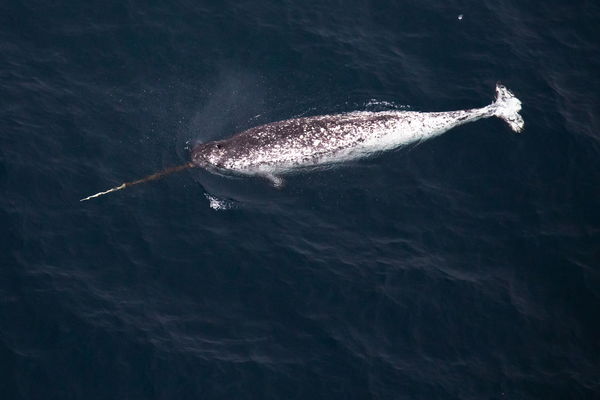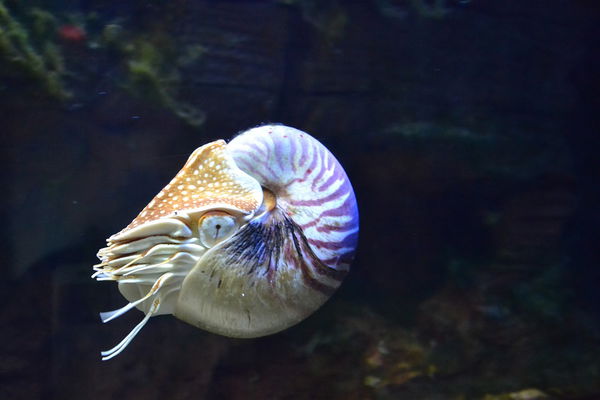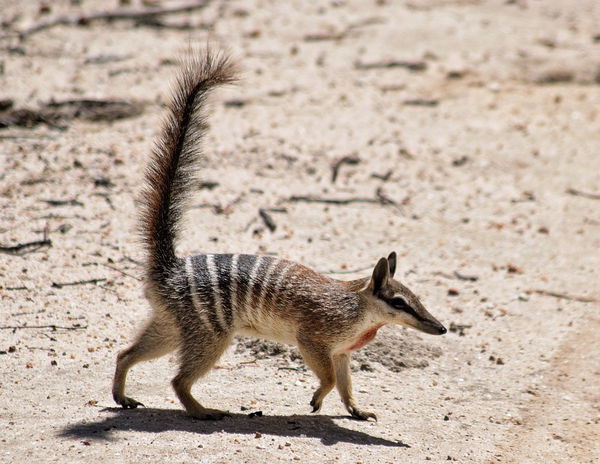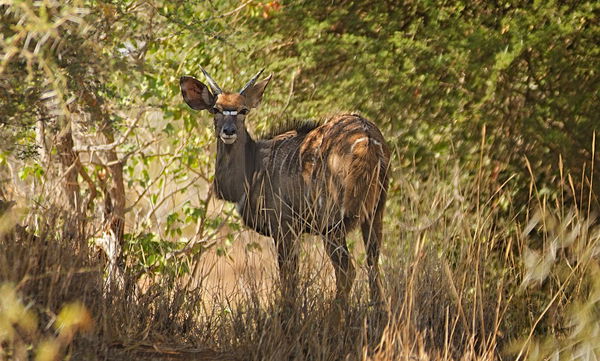The naked mole-rat is a small, hairless rodent that lives in underground burrows in East Africa. Despite their unusual appearance, naked mole-rats are fascinating creatures that have evolved unique traits to survive in their subterranean habitat. They have a complex social structure with a queen, breeding males, and non-breeding workers that perform various tasks, such as digging tunnels, foraging for food, and caring for the young. Naked mole-rats also have remarkable resistance to cancer and can live up to 30 years, which is unusually long for a rodent. They are also able to tolerate low oxygen levels and can survive without food or water for extended periods of time.
Animals that start with N

Photo: Tim Evanson

Photo: Wikipedia
The narwhal is a medium-sized toothed whale found in the Arctic waters of Canada, Greenland, Norway, and Russia. They are easily recognizable by their long, spiraled tusk, which is actually a tooth that can grow up to three meters in length in males.
Narwhals have mottled gray or brown skin that can change color with age and the season. They feed on fish, squid, and shrimp, using their long tusks to stun their prey before swallowing it whole.
Despite being hunted for their ivory tusks and meat, the narwhal population is considered stable and not endangered. However, climate change and pollution may pose a threat to their Arctic habitat and food sources.

Photo: glucosala
Nautilus is a marine animal that belongs to the cephalopod family, along with squids, cuttlefish, and octopuses. Nautiluses have a distinctive spiral-shaped shell that can reach up to 25 cm in diameter. They inhabit the deep waters of the Pacific and Indian Oceans and are considered living fossils, as their ancestors have been around for over 500 million years. Nautiluses have a unique way of moving through water by expelling water from their chambers in their shells, allowing them to move forward or backward, as well as changing their buoyancy to move up or down in the water column.
Nautiluses are carnivorous and feed on small crustaceans and fish. They have up to 90 tentacles with suction cups that they use to catch their prey. Unfortunately, nautiluses are currently facing threats from overfishing and habitat destruction, which has led to a decline in their population. They are also collected for their shells, which are used in the creation of jewelry and other decorative items.

Photo: TerriAnneAllen
The numbat is a small, diurnal marsupial found only in Western Australia. It is known for its unique and striking appearance, with a reddish-brown coat marked by distinctive white stripes across its back and a long, thin snout.
Numbats are primarily insectivorous, feeding primarily on termites which they locate with their acute sense of smell. They are solitary animals, except during breeding season when males and females may form temporary pairs.
Once widespread throughout much of southern Australia, the numbat is now critically endangered due to habitat loss and fragmentation, as well as predation by introduced species such as foxes and cats. Conservation efforts are underway to protect remaining populations and restore degraded habitats.

Photo: IanZA
The nyala is a medium-sized antelope found in southern Africa. Both males and females have shaggy coats of reddish-brown with white stripes on the torso and legs. Males have distinctive spiral horns that can reach up to 80 cm in length, while females have shorter, straighter horns or none at all.
Nyala are primarily browsers, feeding on leaves, shoots, and fruits of various plants. They are mostly active during the early morning and late afternoon, and can often be found near water sources.
Despite being hunted for their meat and skins, the nyala is considered a species of least concern by the IUCN due to its large and stable populations across its range. However, habitat loss and fragmentation remain a threat to local populations in some areas.